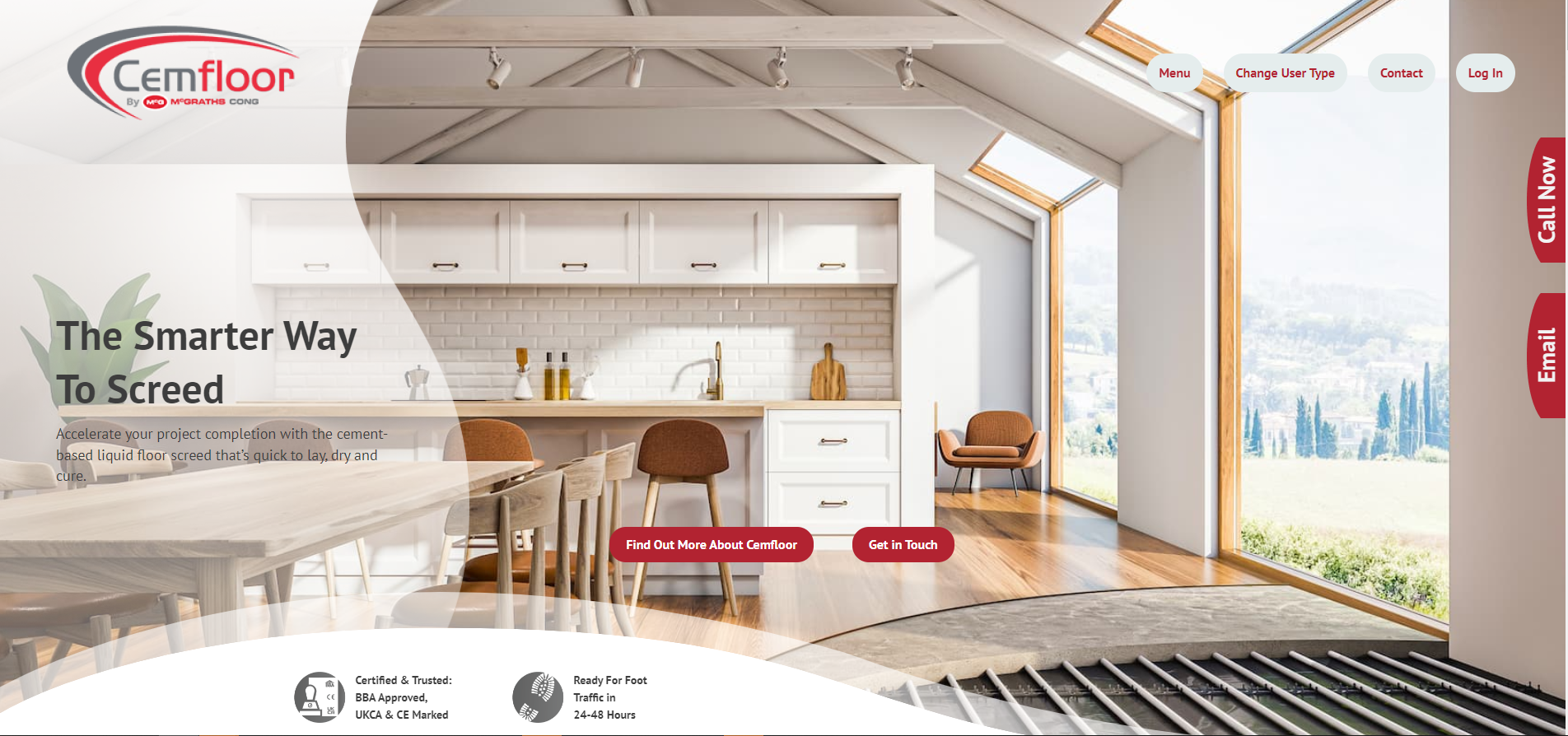5 min read
How Architects Really Feel About Your Website (10 Specifier Insights)
![]() Jack Meisinger
:
03-Nov-2022 16:44:52
Jack Meisinger
:
03-Nov-2022 16:44:52

At the beginning of the year, we interviewed 7 architects in Manchester to help us understand what they think about building product websites.
The architects we interviewed ranged from directors to newly qualified practitioners.
As you may expect from a group of professional designers, they had a lot to say about website design. They rely on websites to do their jobs and are often frustrated by the user experience, product names, and the way information is presented.
We have used these insights to deliver high spec websites for building product companies. And now we’re giving them to you. This way you'll be able to assess whether specifiers are loving or hating your website, and make any necessary tweaks.
Here are the top 10 insights we gained from the workshop:
1. Up-to-date or second-rate
Architectural practices no longer keep product libraries in their practice. They rely on websites for product information. Specifiers view websites as the most up-to-date sources of product information.
They were referred to as “the first port of call.”
Specifiers form an opinion of how up-to-date the website is based on the freshness of the design. Not just the publication date on the technical content. Making a fresh first impression is important.
2. Websites are the Beginning of Long Term Specifier-Manufacturer Relationships
Do you have a fairly standard, commodity-type product? It may seem unlikely that someone is going to do deep-dive research on it. You may not bother to create content around your products just for the off-chance that an architect stumbles across it.
However, as we asked about the process of researching products via websites, one architect revealed they had recently been searching Google for access roof ladders.
These ladders are functional and not particularly aesthetic. But they're important. Educating the architect with content marketing, which allows them to learn about the details and features of the product, its applications, and even the installation process, during this research stage is critical.
Senior architects have already developed preferences for particular products and are loyal to trusted suppliers. They specify out of habit. If you want to become a trusted supplier, the best opportunity is to connect with architects at the beginning of their careers. If you are found and trusted by a junior architect, you have a customer for life.
3. Fonts and Pixels Matter
“What I want to see is websites being better curated – more thought about graphically. Because there is nothing worse than having a really good technical resource that is awful to look at.”
- Ged Couser, Architect Director, BDP
Mr. Couser was clear about his preference for well-designed websites and product information. This makes a case for professional photography and design support (no pixelated images or dated branding).
Ged also suggested trying to work on attractive buildings and projects, because seeing a product installed in a well-designed setting elevates the product. If you are unable to do this, you might consider a 3D render, which can position your product in a beautiful setting that looks realistic. Here’s an example of a digital render on a newly built client website.
According to our workshop participants, architects will often browse Google with a quick image search to get inspiration. If you have formatted the images on your website properly, with accurate names and alt tags, then your product will show up. You should also put them on LinkedIn and Pinterest, as they were also mentioned as sources of design inspiration.
4. Level Up Your Case Studies
Samples can only do so much. Give architects addresses where they can go and see it in real life. Your competition probably isn’t doing this so this is an easy way to make your case studies stand out.
Also, case studies are more interesting if they show novel ways that a product is being used.
They are more useful if they highlight where on the building the product is (not only a photo of the building but detailed photos of the product in the building).
5. Product Names vs. Product Codes
Our workshop participants expressed their frustration with the way companies name their products.
“I don’t know what the difference is between the RS100 and the RS102”.
Instead of codes, architects would prefer names. Ideally descriptive names that indicate the differences between products.
6. Accurate Visual Representation
We heard that, “the way information is being presented is a little frustrating.”
For instance, architects prefer windows with slimmer sight lines. However, they get the impression that photographs try to use angles to make the sight lines of windows look slimmer than they actually are. They would prefer photography that represents the products accurately and enables them to compare them to other options from the same manufacturer, or a different manufacturer.
We even heard the phrase, “I get the feeling that they’re trying to con you.”
Besides making sure your photos present the product objectively, you could also provide a cross-section alongside the photo, that details precise dimensions.
7. Host Technical Information on the Product Page
Many websites host products and technical information in separate sections of the website. This means that if an architect is looking at a particular product and want to take a look at its technical specs, they have to navigate to the area of the website where the technical content is hosted.
Architects find this frustrating, and it can be fixed easily.
Host the technical information on the same page as the product. Then they can view the product and click through to the technical information from the same page.
8. Don’t Make Me Sign In!
The life of an architect is stressful enough without having to remember a million passwords. Requiring specifiers to sign in to a technical portal on your website can diminish your likelihood of having someone engage with your products further.
Asking for an email is fine, but asking them to remember a password is too much.
9. Cost
“We dare not give you a steer on the square metre rate”, said one of the architects in our workshop, imitating the point of view of building product companies.
Of course, the price does depend on many different factors. But this doesn’t mean that you can’t give any indication of the price.
If you really can’t give a number or even a range of figures, you could use pound signs relative to the costs of your own product lines. For instance, product A is £, compared to product B which is ££, compared to product C which is £££.
There is a need for some idea of cost, even if the frame of reference is your own products. But the more information on price you can give the better.
Many marketers refrain from offering a price but this is wrong. Companies who strive for transparency will build trust with specifiers.
10. Nail the Website-to-Sales Conversion
Architects want a lot from the website, but they also want to be able to get in touch with a member of your team quickly and easily. If they can’t quickly find contact information they are likely to go elsewhere.
And they don’t want a receptionist. They want an experienced technical sales rep who can answer their questions.
The architects suggested having a contact page that featured reps by region so they could get in touch with the right person. Another idea is to provide bios of your sales team to reassure them that they know what they’re talking about, even before they ring up.
It was expressed that architects will choose a company for responsiveness. They value the service they get from building product manufacturers, and will even repay this service with loyalty and recommendations to their colleagues.
Conclusion
10 tips from 7 architects. How does your website measure up?
Don’t be overwhelmed. One way to start implementing these is to create a development roadmap.
This is how we build websites. We start with a minimum viable product, and iterate from there, adding features and functionality while gathering live feedback and data, over time. This enables you to make improvements based on real-life insights and shape the website to your customer's preferences.
So start with one change, and monitor the improvement in dwell time, bounce rate, traffic, and enquiries. Then make another one.
Then, a year from now, you’ll have made significant data-informed improvements.
Don’t want to wait that long? Our team of construction marketing specialists, designers, and developers can help.
Get in touch if you’d like to discuss how to create a website architects love.



